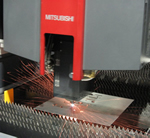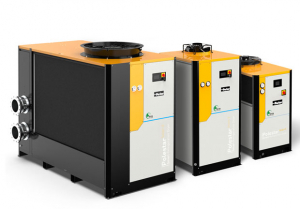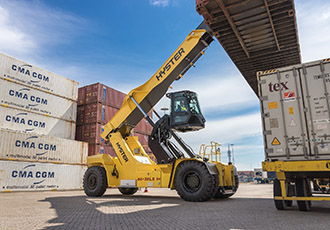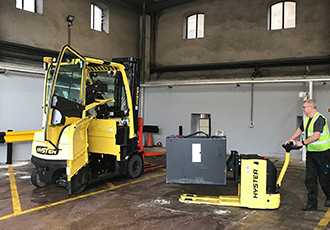Whole Life Cost Approach Is Essential to Maximise ROI When Purchasing Laser Cutting Machines
30th July 2012
Source:
World Machinery Ltd

Although fibre lasers have made tremendous progress over recent years, claims that they are about to replace more conventional types in metal cutting, due to their ability to achieve similar or superior performance at lower cost, are premature. True, fibre lasers offer key benefits: they are compact, flexible, reliable, and achieve an excellent beam quality due to a design that essentially eliminates thermal effects. However, they are limited in terms of peak power; they are also expensive and complex, which is a problem if things go wrong.
As any experienced engineer knows, the initial price of purchasing a laser machine is just one part of the overall cost structure of the machine. What are really important are whole life costs: how much the machine is going to cost to run and maintain over its lifetime. It is sobering to reflect that in many cases this figure can be in excess of the initial purchase price of the laser machine.
At present, lasers based upon the high speed axial blower system are probably the most widely used in the market. This technology has been around for some time, is reliable and produces reasonable results. In addition, such machines are competitively priced. However, the technology does have significant disadvantages: namely high running and maintenance costs.
The high running costs are due to the consumption of gas of the fast axial flow laser design; this can be as much as 20l/hr (typically 144,000l/yr) in continuous production environments*. Moreover, the axial blower laser also has high power consumption during beam-off periods. In addition to the resultant high costs, the combination of these factors also means that fast axial flow lasers emit quite high levels of C02, which is a major issue in a World seeking to reduce such emissions.
The complementary problem with maintenance costs is the result of wearing out of turbines (on the blower pump) and mirrors: the latter becoming soiled by oil mist from the turbo blower. The cost for replacing these components – in some cases on a yearly cycle – can be considerable: £20,000 to £30,000 being a reasonable estimate. * (based on 1year usage: 24hrs x 25days x 12months)
The alternative to the fast axial flow laser is Mitsubishi’s patented three-axis, cross-flow resonator design. This offers a number of key advantages, including reduced laser gas consumption; substantially reduced running and maintenance costs; improved reliability; increased stability of beam mode by slow gas flow; low heat input and high-speed processing; and much reduced CO2 emissions.
The cross-flow resonator design delivers the highest cutting power per watt available, employing Diamond Path Technology for constant beam control & exceptional cutting performance. “Output power alone does not define cutting performance or cut edge quality,” said Wayne Hipkiss. “It takes superior “Cutting Power” to achieve high-performance results. Cutting power is optimised by creating the perfect blend of output power, beam quality, beam stability and power control. These results are visible through superior edge quality and excellent overall processing capability.”
The benefits of Mitsubishi’s simplified resonator design also extend to savings in running costs and maintenance. The cross-flow laser consumes less than three bottles of laser gas a year (running 250 days/year). What’s more, a single resonator charge of fresh gas enables continuous rate power operation for 24 hours without replenishment. For the laser user, this means major reductions in running costs, while dramatically eliminating bottle replacement work.
Also in respect of running costs, the just-on-time discharge system of the cross flow laser substantially reduces power consumption, as result of automatically switching to ‘eco-mode’ during standby, reducing costs (power + processing gas) by 90%. The eco credentials of the cross flow gas excitation design are demonstrated further by carbon dioxide emissions, which are reduced by around 30% compared to high speed axial flow lasers.
The simplicity and reliability of the cross flow design also brings benefits in terms of extended maintenance intervals, leading to reduced maintenance costs. To date, not a single resonator has needed replacing, despite over 10,000 machines having been sold with the technology.
The unique resonator design also eliminates the need for expensive quartz tubes and turbine blower systems. As a result, it has been proven to require 2-5 times less maintenance than other laser equipment on the market.
In addition to the benefits of greatly improved whole life costs, the latest cross flow laser from Mitsubishi the, eX series, also employs the latest Jet Pierce technology to reduce the processing time for thick mild steel plate (up to 27mm) and medium thick plates by up to 30%. The same technology combined with improved processing speeds –up to 50m/min feed rates – also reduces the processing time for thin sheets by approximately 20%. The eX Series can also cut stainless steel up to 22mm and aluminium alloy up to 17mm, both achieved using nitrogen as an assist gas.
At present, lasers based upon the high speed axial blower system are probably the most widely used in the market. This technology has been around for some time, is reliable and produces reasonable results. In addition, such machines are competitively priced. However, the technology does have significant disadvantages: namely high running and maintenance costs.
The high running costs are due to the consumption of gas of the fast axial flow laser design; this can be as much as 20l/hr (typically 144,000l/yr) in continuous production environments*. Moreover, the axial blower laser also has high power consumption during beam-off periods. In addition to the resultant high costs, the combination of these factors also means that fast axial flow lasers emit quite high levels of C02, which is a major issue in a World seeking to reduce such emissions.
The complementary problem with maintenance costs is the result of wearing out of turbines (on the blower pump) and mirrors: the latter becoming soiled by oil mist from the turbo blower. The cost for replacing these components – in some cases on a yearly cycle – can be considerable: £20,000 to £30,000 being a reasonable estimate. * (based on 1year usage: 24hrs x 25days x 12months)
The alternative to the fast axial flow laser is Mitsubishi’s patented three-axis, cross-flow resonator design. This offers a number of key advantages, including reduced laser gas consumption; substantially reduced running and maintenance costs; improved reliability; increased stability of beam mode by slow gas flow; low heat input and high-speed processing; and much reduced CO2 emissions.
The cross-flow resonator design delivers the highest cutting power per watt available, employing Diamond Path Technology for constant beam control & exceptional cutting performance. “Output power alone does not define cutting performance or cut edge quality,” said Wayne Hipkiss. “It takes superior “Cutting Power” to achieve high-performance results. Cutting power is optimised by creating the perfect blend of output power, beam quality, beam stability and power control. These results are visible through superior edge quality and excellent overall processing capability.”
The benefits of Mitsubishi’s simplified resonator design also extend to savings in running costs and maintenance. The cross-flow laser consumes less than three bottles of laser gas a year (running 250 days/year). What’s more, a single resonator charge of fresh gas enables continuous rate power operation for 24 hours without replenishment. For the laser user, this means major reductions in running costs, while dramatically eliminating bottle replacement work.
Also in respect of running costs, the just-on-time discharge system of the cross flow laser substantially reduces power consumption, as result of automatically switching to ‘eco-mode’ during standby, reducing costs (power + processing gas) by 90%. The eco credentials of the cross flow gas excitation design are demonstrated further by carbon dioxide emissions, which are reduced by around 30% compared to high speed axial flow lasers.
The simplicity and reliability of the cross flow design also brings benefits in terms of extended maintenance intervals, leading to reduced maintenance costs. To date, not a single resonator has needed replacing, despite over 10,000 machines having been sold with the technology.
The unique resonator design also eliminates the need for expensive quartz tubes and turbine blower systems. As a result, it has been proven to require 2-5 times less maintenance than other laser equipment on the market.
In addition to the benefits of greatly improved whole life costs, the latest cross flow laser from Mitsubishi the, eX series, also employs the latest Jet Pierce technology to reduce the processing time for thick mild steel plate (up to 27mm) and medium thick plates by up to 30%. The same technology combined with improved processing speeds –up to 50m/min feed rates – also reduces the processing time for thin sheets by approximately 20%. The eX Series can also cut stainless steel up to 22mm and aluminium alloy up to 17mm, both achieved using nitrogen as an assist gas.
Similar articles
More from World Machinery Ltd
- Whole Life Cost Approach Is Essential to Maximise ROI When Purchasing Laser Cutting Machines 30th July 2012
- World Machinery Launches Revolutionary New Mitsubishi eX Series High Speed (Cross Flow) C02 Laser 6th July 2012
- DHR International Invests in World Machinery Laser Package to Increase Production & Reduce Lead Times for Customers 22nd May 2012
- World Machinery Takes A Laserblade To Prestwood Panels Ltd. 30th April 2012
Product Centre Updates
2024 World Battery & Energy Storage Industry Expo (WBE)
8th August 2024
China 1st and 2nd Floor, Area A, China Import and Export Fair Complex




.jpg)







Write a comment
No comments